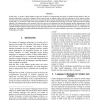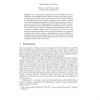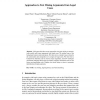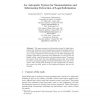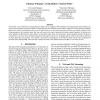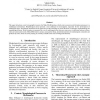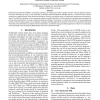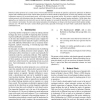LREC
2010
14 years 11 months ago
2010
In this paper, we present a brief snapshot of the state of affairs in computational processing of Catalan and the initiatives that are starting to take place in an effort to bring...
LREC
2010
15 years 2 months ago
2010
In order to manage the knowledge representation of European law we have proposed the Legal Taxonomy Syllabus methodology (Ajani et al., 2007a; Ajani et al., 2007b). In this paper ...
LREC
2010
15 years 2 months ago
2010
The vast amount of information freely available on the Web constitutes a unparalleled resource for the automatic knoweledge discovery and learning. In this paper we propose a study...
LREC
2010
15 years 2 months ago
2010
In this paper we evaluate the performance of multilabel classification algorithms on the EUR-Lex database of legal documents of the European Union. On the same set of underlying d...
126
click to vote
LREC
2010
15 years 2 months ago
2010
Abstract. This paper describes recent approaches using text-mining to automatically profile and extract arguments from legal cases. We outline some of the background context and mo...
117
click to vote
LREC
2010
15 years 2 months ago
2010
Abstract. This paper presents an information system for legal professionals that integrates natural language processing technologies such as text classification and summarization. ...
108
click to vote
LREC
2010
15 years 2 months ago
2010
We describe a new method for extracting Negative Polarity Item candidates (NPI candidates) from dependency-parsed German text corpora. Semi-automatic extraction of NPIs is a chall...
101
click to vote
LREC
2010
15 years 2 months ago
2010
This paper introduces a new lexicographic resource, the MuLeXFoR database, which aims to present word-formation processes in a multilingual environment. Morphological items repres...
120
click to vote
LREC
2010
15 years 2 months ago
2010
Spoken Document Retrieval (SDR) is a promising technology for enhancing the utility of spoken materials. After the spoken documents have been transcribed by using a Large Vocabula...
LREC
2010
15 years 2 months ago
2010
Historical cabinet protocols are a useful resource which enable historians to identify the opinions expressed by politicians on different subjects and at different points of time....
